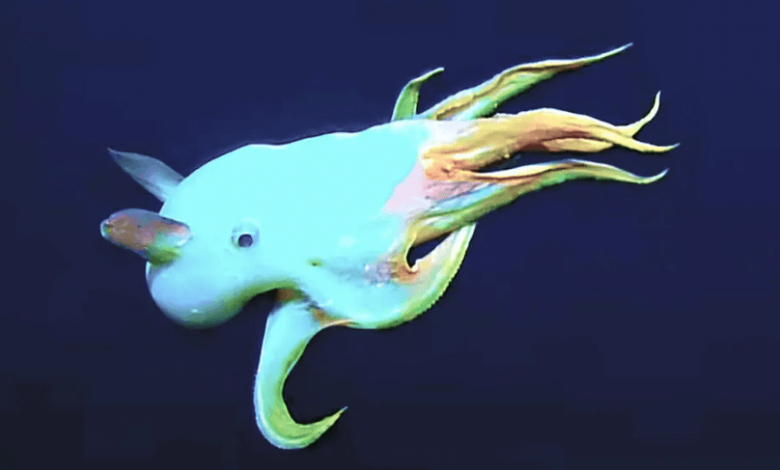Baby:0ccm75x4gk0= Dumbo Octopus

The Baby:0ccm75x4gk0= Dumbo Octopus, characterized by its unique ear-like fins, occupies a remarkable ecological niche in the vast depths of the ocean, specifically within the bathypelagic zone. Its intriguing adaptations, such as specialized chromatophores for communication and diverse feeding strategies, reveal a complex life that belies its seemingly simple appearance. However, as this species navigates a landscape fraught with human-induced challenges, the implications for its survival and the broader marine ecosystem become increasingly critical. What does this mean for future conservation efforts and our understanding of deep-sea biodiversity?
Unique Features of Dumbo Octopus
Exhibiting a remarkable array of adaptations, the Dumbo octopus (Grimpoteuthis spp.) is distinguished by its unique morphological and behavioral characteristics that set it apart from other cephalopods.
Its reproductive behavior is notable, as individuals engage in complex courtship displays.
Additionally, sensory adaptations, including specialized chromatophores and statocysts, enhance their ability to navigate and communicate in the deep-sea environment, ensuring survival and reproductive success.
Habitat and Distribution
The Dumbo octopus inhabits a variety of deep-sea environments, primarily found in the bathypelagic zone of the world’s oceans, typically at depths ranging from 200 to 4,000 meters.
This aquatic environment is crucial for its reproductive behavior, providing both shelter and a stable habitat for spawning.
Its distribution across these depths highlights the species’ adaptability to various ecological niches within the marine ecosystem.
Read Also Baby:0xudedbk5mc= Stitch and Angel
Diet and Feeding Behavior
Dumbo octopuses exhibit a diverse diet primarily consisting of small invertebrates, including crustaceans, worms, and various types of gelatinous zooplankton.
Their feeding strategies are characterized by opportunistic prey selection, allowing them to adapt to varying environmental conditions.
Conservation Status and Threats
As deep-sea organisms, dumbo octopuses face a variety of conservation challenges that stem from both natural and anthropogenic factors.
Human impact, such as climate change, habitat destruction, and deep-sea fishing, threatens their populations.
Current conservation efforts aim to mitigate these threats through habitat protection and sustainable fishing practices, but ongoing research is essential to understand their ecology and ensure the effectiveness of these initiatives.
Conclusion
The Baby:0ccm75x4gk0= Dumbo Octopus, with its unique adaptations and behaviors, exemplifies the complexities of deep-sea ecosystems. Its delicate balance within the bathypelagic zone is increasingly threatened by anthropogenic factors. As climate change alters ocean temperatures and deep-sea fishing disrupts food webs, the future of this enigmatic species hangs in the balance. Efforts in conservation and research are paramount, as the fate of the Dumbo octopus mirrors broader environmental health, underscoring the interconnectedness of marine biodiversity and human impact.





